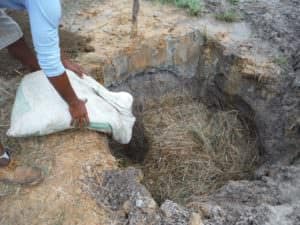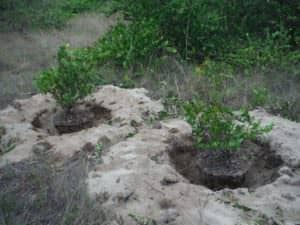We looked up, and there they were. Not one, but three birds’ nests in a tree that had been planted only a couple of weeks earlier. The nervous fluttering of a tropical mockingbird nest owner was one of the many signs of new life in what once had been a desolate field. Four years earlier, Hamanasi purchased a four-acre lot adjacent to its coastal forest. Tall grasses grew on the baked plot that had been stripped of its natural vegetation with the aim of “development”. Hamanasi is, indeed, developing the land, but first is restoring it, one tree at a time.
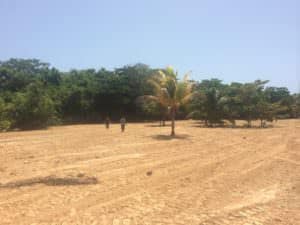
Coastal forests once defined the coastlines of Belize. These littoral woodlands are one of the most threatened types of forests due to coastal development. Plant life ranges from salt loving sea grapes (Coccoloba uvifera), coco plum (Chrysobalanus icaco) and coconuts (Cocos nucifera) to craboo/nance (Byrsonima crassifolia), mahogany (Swietenia Macrophilla) mango (Mangifera indica), cashew (Anacardium occidentale), Gumbo Limbo (Bursera simaruba) trees, among many others. Orchids, epi cacti and philodendron vines cling to tree limbs as agoutis skirt through the underbrush. A plethora of birds, iguanas, bats, snakes, lizards and more call this lush environment home. Migrating birds gorge themselves on native fruits after long journeys. Intertwining roots systems of trees, grasses and vines secure porous sand minimizing erosion that can choke the barrier reef.
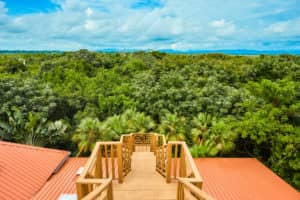
When Hamanasi expanded beyond its beachfront rooms, it added 13 treehouses nestled in its coastal forest. Amidst the trees, guests have the opportunity to immerse themselves in a jungle experience, steps from the Caribbean Sea. Steppingstones imprinted with leaves lead past lady of the night orchids (Brassavola nodosa) to freestanding cabanas raised 12-feet from the ground. Relaxing in a hammock on the porch guests can watch butterflies flitting about tree blossoms and tree frogs leaping from their camouflaged hiding spots. Nature’s alarm clock starts each day with the call and response of chachalacas (Ortalis vetula). At night, crickets and frogs lull guests to sleep in draped king sized beds.
On its new property, Hamanasi wanted to reinstate this verdant ecosystem and add more treehouses. And thus began the process of replanting a forest. According to one of Hamanasi’s founders, Dana Krauskopf, Hamanasi has strived to develop in harmony with its surroundings. “We believe that sustainable development is possible and can be win for nature, guests and the business,” said Krauskopf. Hamanasi hired Anthony “Tony” Chanona to assist in this endeavor.
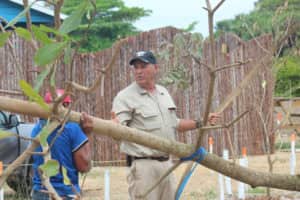
Tony is a tall, stately gentleman farmer from the central region of Belize. The former mayor of the capital city Belmopan has a quick smile and a serious passion for trees. He has mastered the art of transferring large trees to new locations after a two-month process of root pruning. Along with many specimens from his farm, he has helped Hamanasi gardeners transplant trees and bushes from its eleven-acre nature preserve.
“Normally, I am asked to help landscape a small area or plant a particular tree,” said Tony. “Never before have I been asked to reforest an area and bring it back to its natural state.”
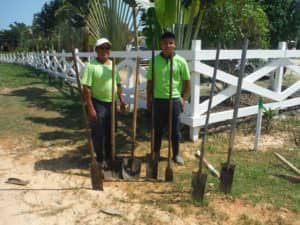
To date, Hamanasi has planted over 150 trees and bushes and begun building two new deluxe treehouses on its new property. Tree varieties include among others coco plum (Chrysobalanus icaco), coconuts (Cocos nucifera), craboo (Byrsonima crassifolia) custard apple (Annona reticulate), fiddlewood (Vitex gaumeri), trumpet (Cecropia sp.), and, of course, its namesake, Hamanasi trees (Terminalia Catappa). This number is expected to double in the coming months after the rainy season begins. In the future, Hamanasi also plans to add a spa set amid the littoral forest.
For now, however, a tropical mockingbird tends to its nest, waiting patiently for more new life to appear.
